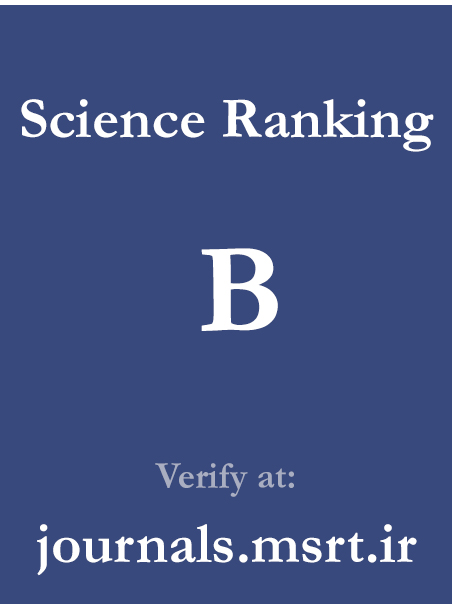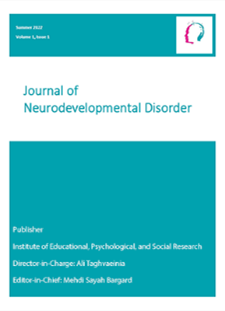Comparison of the Effectiveness of Sports Vision Training and Conventional Methods on Functional Ability and State-Competitive Anxiety of Young Volleyball Players in a Supervised Environment
Keywords:
Functional ability, sports vision, psychological pressure, mood, volleyballAbstract
Purpose: The present study aimed to compare the effects of three training methods—sports vision, combined, and specialized/traditional—on functional ability and components of state-competitive anxiety in young Iraqi volleyball players under supervised conditions.
Methods and Materials: This research employed a semi-experimental and applied design conducted in the field using a pre-test–post-test plan. A total of 42 participants were recruited and randomly assigned to three groups (n = 14 each): sports vision, combined, and specialized/traditional. Data analysis was performed using analysis of covariance and Bonferroni post-hoc tests through SPSS version 23 at a significance level of less than .05.
Findings: The findings revealed significant differences among the three training groups in both functional and psychological variables. Regarding performance indicators, although no significant differences were observed among the groups in vertical jump, the combined training group demonstrated significantly better performance than the specialized/traditional group in displacement time under supervisory pressure and evaluation conditions (p = .003). In the psychological domain, the results indicated significant differences between groups. Both the sports vision and combined training groups, compared to the specialized/traditional group, showed a significant reduction in cognitive anxiety (p = .000) and somatic anxiety (p = .000), as well as a significant increase in self-confidence (p = .000).
Conclusion: These findings confirm the superiority of modern training methods (combined and sports vision training) in improving psychological indicators that influence athletic performance.
Downloads
References
Badami, R., Mahmoudi, S., & Baluch, B. (2016). Effect of sports vision exercise on visual perception and reading performance in 7-to 10-year-old developmental dyslexic children. Journal of Exercise Rehabilitation, 12(6), 604. https://doi.org/10.12965/jer.1632728.364
Baghandeh, H., Hosseini, F. S., & Dehghani Zadeh, J. (2022). The effect of sports vision training and transcranial direct current stimulation on visual short-term memory and spatial recognition memory of volleyball players. Motor Behavior Quarterly, 14(50), 166-184. https://mbj.ssrc.ac.ir/article_3712.html
Broadbent, D. P., Causer, J., Williams, A. M., & Ford, P. R. (2015). Perceptual-cognitive skill training and its transfer to expert performance in the field: future research directions. European Journal of Sport Science, 15(4), 322-331. https://doi.org/10.1080/17461391.2014.957727
Cuthbertson, J., Lauder, M., & Richards, J. (2019). The effects of cognitive-bodily reappraisal training on physiological markers and subjective anxiety in elite athletes. Journal of Sport & Exercise Psychology, 41(5), 261-273. https://doi.org/10.1123/jsep.2018-0291
Gabbett, T. J., & Benton, D. (2008). Reactive agility of rugby league players. Journal of Science and Medicine in Sport, 12(1), 212-214. https://doi.org/10.1016/j.jsams.2007.08.011
Ghasemi, A., Momeni, M., Jafarzadehpur, E., Rezaee, M., & Taheri, H. (2011). Visual skills involved in decision making by expert referees. Perceptual and Motor Skills, 112(1), 161-171. https://doi.org/10.2466/05.22.24.27.PMS.112.1.161-171
Hülsdünker, T., Gunasekara, N., & Mierau, A. (2019). The effect of neurofeedback training on visuospatial attention and motor performance in elite athletes. Medicine & Science in Sports & Exercise, 51(5), 991-1003. https://doi.org/10.1249/MSS.0000000000001861
Jackson, R. C., Ashford, K. J., & Kinrade, N. P. (2021). The role of perceptual-cognitive training in developing robust sport-confidence. Psychology of Sport and Exercise, 55, 101942. https://doi.org/10.1016/j.psychsport.2021.101942
Kramer, T., Hirsch, M., & Walther, M. (2018). The impact of high-stakes competition on physiological and psychological indices of stress in elite athletes: A longitudinal study. International Journal of Sport Psychology, 49(5), 435-456. https://doi.org/10.7352/IJSP.2018.49.435
Middleton, S. C., Marsh, H. W., & Martin, A. J. (2019). The psychological performance reservoir: Using pressure training to enhance skill execution and resilience in sport. Journal of Applied Sport Psychology, 31(4), 451-469. https://doi.org/10.1080/10413200.2018.1557766
Nielsen, K., McGregor, I., & Patel, T. (2019). The effects of mindfulness-based interventions on cognitive anxiety and sport performance under pressure: A systematic review. Journal of Clinical Sport Psychology, 13(2), 141-164. https://doi.org/10.1123/jcsp.2017-0047
Reyment, C., Bonney, N., & MacMahon, C. (2021). The effects of a perceptual-motor training program on the decision-making and skill execution of team sport players. Journal of Sports Sciences, 39(15), 1728-1736. https://doi.org/10.1080/02640414.2021.1896456
Robinson, A., Bennett, S., & Kingston, K. (2020). Testing the effects of integrated perception-action training on anxiety and performance under pressure. Psychology of Sport and Exercise, 51, 101780. https://doi.org/10.1016/j.psychsport.2020.101780
Savelsbergh, G. J., van Gastel, P. J., & van Kampen, P. M. (2010). Anticipation and visual search behaviour in expert sports performers. International Journal of Sport Psychology, 41(2), 167-189. https://pubmed.ncbi.nlm.nih.gov/16338733/
Ulrich, M., Weigelt, M., & Schüler, J. (2017). Too much of a good thing? The inverted-U relationship between pressure training dosage and self-efficacy in athletes. Sport, Exercise, and Performance Psychology, 6(3), 277-290. https://doi.org/10.1037/spy0000095
Wilson, M. R., Wood, G., & Vine, S. J. (2018). Anxiety, attention, and visuomotor performance: The effects of skill-level and task demands (Vol. 240). https://doi.org/10.1016/bs.pbr.2018.09.007
Wilson, T. A., & Falkel, J. (2004). Sportsvision: training for better performance. Human Kinetics. https://books.google.com/books/about/SportsVision.html?id=8AMHnqQHWBYC
Wood, G., Vine, S. J., & Wilson, M. R. (2017). The impact of visual attention training on sport performance, anxiety and pressure perception. Journal of Sport and Exercise Psychology, 39(6), 447-458. https://doi.org/10.1123/jsep.2017-0055
Zamani Fard, K., Khajavi, S., & Ghotbi Varzaneh, M. (2024). Comparing the effect of sports vision training and static eye exercises on decision-making, gaze behavior and service learning of beginner tennis players. Motor Learning and Sports Development, 16(4), 87-106.
Downloads
Published
Submitted
Revised
Accepted
Issue
Section
License
Copyright (c) 2025 Hussein Srayyih Hammood Al-Fraidawi , Hamid Zahedi, Alaa Muhsun Yasir Al-uoda, Zohreh Meshkati (Author)

This work is licensed under a Creative Commons Attribution-NonCommercial 4.0 International License.

